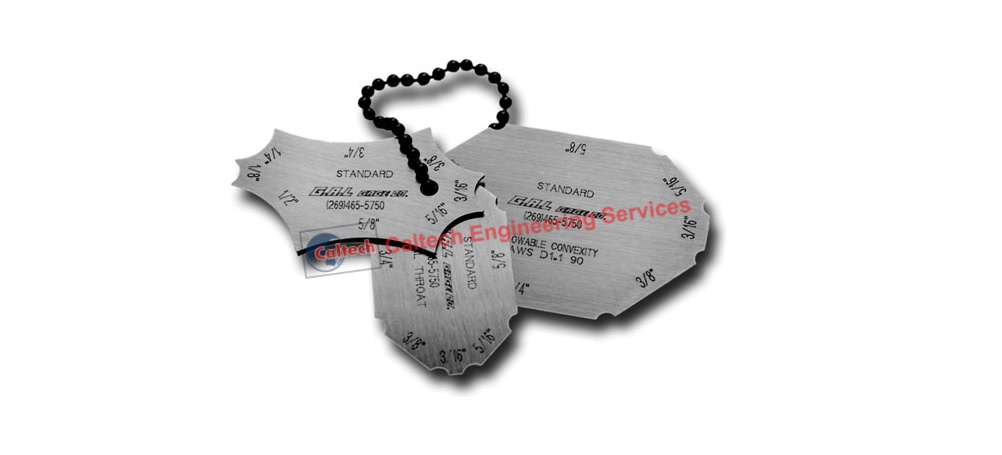The Ultimate Overview to Fillet Weld Quality Control: Making Certain Stamina and Sturdiness in Your Welded Joints
In the realm of welding, guaranteeing the stamina and toughness of fillet welds is critical for the honesty of bonded joints. As we embark on this exploration of fillet weld top quality control, we will certainly reveal vital variables that influence weld strength, dig right into reliable examination methods, and review strategies for avoiding typical weld issues.
Importance of Fillet Weld Quality Assurance
Guaranteeing appropriate fillet weld high quality control is extremely important in guaranteeing the structural integrity and durability of welded components in various industries. Fillet welds are typically utilized in architectural steelwork, bridges, stress vessels, pipes, and other vital facilities where the stamina of the weld is vital to general security and efficiency. Quality assurance procedures such as aesthetic assessments, non-destructive testing, and adherence to welding procedures help recognize possible issues like absence of blend, insufficient penetration, undercutting, or too much support.
Key Factors Influencing Weld Strength
Accomplishing optimal weld stamina calls for careful factor to consider of various crucial factors that affect the honesty and durability of the welded joint. The initial essential aspect is proper joint preparation, which entails cleaning the base metals to get rid of any kind of contaminants that might damage the weld. Additionally, the fit-up of the joint is necessary to make certain proper infiltration and blend of the filler material.
The selection of the suitable welding strategy and criteria additionally plays a significant function in figuring out weld strength. Elements such as warm input, traveling rate, and electrode angle can affect the top quality of the weld. In addition, keeping the correct interpass temperature during multi-pass welding is crucial to avoid fracturing and ensure a solid bond in between the layers.
Additionally, the choice of filler material and its compatibility with the base steels is important for accomplishing high weld stamina. Utilizing filler material with the suitable mechanical homes can boost the total stability of the weld. Lastly, post-weld warmth treatment and proper assessment methods are essential action in guaranteeing the toughness and toughness of the welded joint.
Examination Methods for Weld Integrity

Another vital evaluation approach is liquid penetrant screening, where a fluid dye is related to the weld surface - Gauge Fillet Weld. The dye seeps right into any surface-breaking flaws, making them visible under UV light. This method is efficient for spotting imperfections that may not show up to the nude eye


Ultrasonic testing is additionally commonly used Continue for evaluating weld honesty. High-frequency noise waves are directed into the weld, and any kind of disruptions in the acoustic wave pattern indicate prospective problems like splits or lack of combination.
These examination methods play a crucial duty in guaranteeing the high quality and integrity of welds, ultimately contributing to the general toughness and sturdiness of bonded joints in commercial setups.
Preventing Common Weld Flaws
In order to keep the architectural honesty of welded joints in industrial applications, it is important to resource carry out safety nets to resolve common weld defects. One common problem is lack of combination, where the filler material stops working to bond appropriately with the base steels, bring about vulnerable points in the weld. This can be prevented by guaranteeing proper heat control and using the correct welding technique.
An additional constant concern is porosity, brought on by gas entrapment in the weld steel during the welding process. To avoid this, it is vital to clean the base steels extensively, utilize dry electrodes, and maintain a suitable welding setting with appropriate ventilation.
Additionally, cracks in welds can endanger the joint's stamina. To prevent this issue, it is very important to manage the cooling price after welding, utilize preheating when necessary, and pick suitable welding parameters.
Enhancing Bonded Toughness With Appropriate Strategies
To boost the durability and integrity of bonded structures, using sophisticated welding strategies is imperative. One critical technique to boost weld toughness read what he said is to guarantee appropriate weld bead positioning. By positioning the weld bead properly within the joint, the weld's stamina and resistance to exhaustion can be substantially improved. Furthermore, making use of the appropriate welding criteria, such as voltage, current, and travel rate, is important for attaining a durable weld. These specifications straight impact the weld's infiltration, blend, and overall high quality, adding to its longevity.
Selecting the best filler metal and making certain the sanitation of the base metals can prevent incorporations and other problems that might compromise the weld's durability. By applying these appropriate techniques, welders can ensure that their bonded joints exhibit exceptional toughness and sturdiness, meeting the greatest quality criteria.
Conclusion
In conclusion, preserving top quality control requirements for fillet welds is essential for making certain the stamina and longevity of welded joints. By recognizing the essential variables affecting weld toughness, utilizing assessment methods for weld stability, protecting against common weld flaws, and employing appropriate strategies, welders can enhance the overall toughness of their welds. It is vital to focus on quality assurance procedures to generate durable and dependable welded joints.
In the world of welding, making certain the toughness and resilience of fillet welds is vital for the honesty of bonded joints. As we get started on this exploration of fillet weld top quality control, we will discover important elements that influence weld stamina, dig right into reliable examination approaches, and talk about strategies for preventing typical weld flaws.Accomplishing optimum weld strength requires careful consideration of numerous vital variables that affect the honesty and longevity of the bonded joint (Gauge Fillet Weld).In final thought, preserving high quality control standards for fillet welds is crucial for ensuring the toughness and longevity of bonded joints. By comprehending the essential elements influencing weld toughness, using inspection methods for weld honesty, stopping common weld issues, and utilizing appropriate techniques, welders can boost the overall durability of their welds